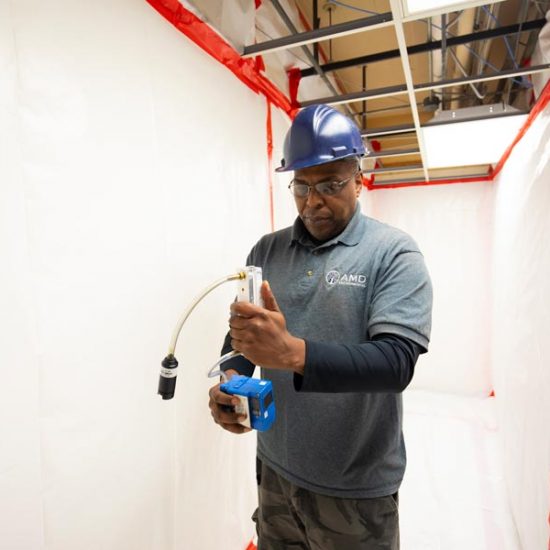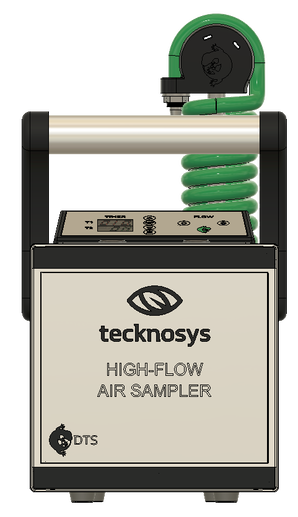Efficient Asbestos Air Testing Approaches
Efficient Asbestos Air Testing Approaches
Blog Article
Your Guide to Effective Asbestos Examining Procedures
Asbestos screening procedures are a vital element of guaranteeing the safety and security of interior environments, specifically in older structures where this hazardous product might be present. The prospective health threats associated with asbestos exposure make it crucial to approach testing with precision and thoroughness. From understanding the residential properties of asbestos to successfully analyzing test results, an extensive overview can equip people with the knowledge and devices needed to browse this complicated process. Keep tuned to uncover the important actions and factors to consider that can assist you secure versus the risks presented by asbestos.
Recognizing Asbestos and Its Threats
Asbestos, a naturally happening mineral understood for its warm resistance and sturdiness, postures severe health threats when its fibers are breathed in or ingested. Asbestos Air Sampling. Exposure to asbestos can lead to severe health problems such as lung cancer cells, asbestosis, and mesothelioma. In spite of its valuable buildings, asbestos has actually been widely outlawed in numerous nations because of the proven web link between asbestos direct exposure and these life-threatening illness
The threat depends on the tiny fibers that can easily come to be airborne when asbestos-containing materials are disrupted or harmed. Once inhaled, these fibers can end up being lodged in the lungs, creating inflammation and scarring over time. The latency duration between direct exposure to asbestos and the advancement of relevant illness can span a number of decades, making very early detection and avoidance crucial.
Asbestos was frequently used in construction products, insulation, and auto components prior to its health threats were completely comprehended. Today, proper testing and removal of asbestos-containing products are necessary to protect individuals from the risks linked with asbestos exposure.
Identifying Potential Asbestos Materials
The identification of possible asbestos products is a crucial action in ensuring the safety of individuals exposed to hazardous substances in different atmospheres. Asbestos can be found in a large range of building products, including yet not restricted to insulation, ceiling ceramic tiles, flooring ceramic tiles, cement sheets, and roof covering tiles - asbestos testing service. Determining these materials properly is vital to efficiently taking care of the dangers connected with asbestos exposure

In instances where visual assessment is undetermined, samples of presumed materials can be gathered and sent out to recognized research laboratories for screening. These labs utilize specialized techniques such as polarized light microscopy or transmission electron microscopy to accurately identify the existence of asbestos fibers in the samples. By adhering to strenuous identification treatments, people can properly reduce the threats connected with asbestos direct exposure.
Choosing the Right Testing Approach
Identification of possible asbestos materials plays an essential duty in determining the appropriate testing approach for exact asbestos fiber detection. When presumed products have been recognized, choosing the right screening method is vital to make sure reliable results. There are 2 key techniques for asbestos screening: polarized light microscopy (PLM) and transmission electron microscopy (TEM) PLM is frequently made use of for preliminary testing as it is cost-efficient and provides fast results. PLM has restrictions in detecting asbestos fibers that are smaller sized than 1 to 3 microns. On the various other hand, TEM is an advanced method that can properly determine asbestos fibers at the ultrastructural level. While TEM is extra time-consuming and expensive than PLM, it provides higher level of sensitivity and uniqueness in asbestos detection. Selecting the suitable testing technique relies on numerous aspects such as the kind of product being tested, the called for level of sensitivity of the evaluation, and the available budget. It is important to talk Read Full Article to certified asbestos testing specialists to establish the most suitable approach for your specific screening requirements.
Conducting Sample Collection Safely
When accumulating samples for asbestos testing, focusing on security steps is vital to reduce prospective direct exposure dangers. Asbestos fibers are unsafe when disrupted, making it essential to comply with proper safety protocols during sample collection - asbestos inspection. Prior to starting the sampling process, ensure that you are outfitted with individual his comment is here safety devices (PPE) such as disposable coveralls, goggles, gloves, and masks to stop inhalation or call with asbestos fibers
It is necessary to wet the sampling area utilizing a mild mist of water to stop the fibers from coming to be air-borne throughout collection. When collecting samples and avoid aggressive scuffing or piercing that might release asbestos fibers into the air, Use care. Instead, thoroughly cut a little piece of the product using ideal tools and place it into a sealed container for analysis by a qualified lab.
Additionally, classifying each example with thorough information concerning the tasting place, collector, and date's name is necessary for precise record-keeping and analysis. By complying with these safety standards, you can perform example collection for asbestos testing effectively while lessening the danger of direct exposure.
Analyzing Test Results and Next Actions

Conclusion
To conclude, efficient asbestos screening procedures are important in determining and managing prospective health threats linked with asbestos exposure. By understanding the threats of asbestos, identifying possible materials, picking the appropriate screening technique, conducting example collection safely, and translating test results properly, organizations and people can take the needed steps to protect themselves and others from the harmful results of asbestos. It is critical to focus on safety and security and appropriate testing methods to guarantee a healthy environment for all.

Identification of potential asbestos products plays a crucial duty in determining the ideal testing approach for precise asbestos fiber detection. The test results will show the presence or lack of asbestos, the kind of asbestos fibers present, and the focus degrees.In verdict, effective asbestos screening procedures are important in recognizing and taking care of prospective health risks linked with asbestos exposure. By recognizing the dangers of asbestos, determining possible materials, picking the appropriate testing method, carrying out sample collection safely, and translating test results accurately, companies and people can take the required steps to safeguard themselves and others from the harmful impacts of asbestos.
Report this page